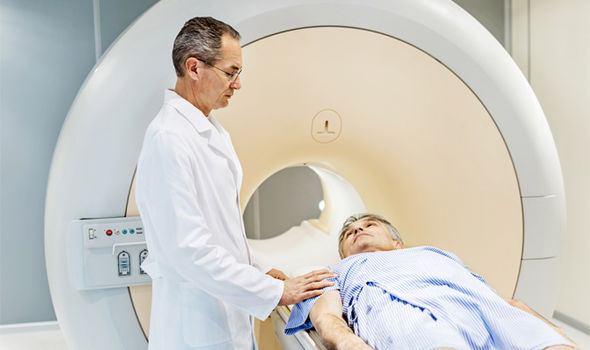Precise Blog – How MRI Scans Can Reduce the Need for Biopsies
How MRI Scans Can Reduce the Need for Biopsies
Researchers at the Simmons Comprehensive Cancer Center have authored a study detailing a multiparametric magnetic resonance imaging (mpMRI) technique that predicts a malignant type of kidney cancer without performing a biopsy. The results of the method are impressive, but require more refinement to fully take the place of a biopsy.
Doctors frequently find kidney tumors accidentally while conducting CT scans for other reasons.
These scans alone do not yield the necessary information that tells doctors whether they are malignant or benign. Instead, a biopsy is usually performed. These procedures can save lives by correctly identifying the nature of the tumor, but they are also invasive and can cause complications.
“Using mpMRI, multiple types of images can be obtained from the renal mass and each one tells us something about the tissue,” Dr. Ivan Pedrosa, Professor of Radiology and Chief of Magnetic Resonance Imaging told the UT Southwestern Newsroom.
Identifying malignant masses in the kidney is extremely important because treatment is highly effective before the tumor metastasizes. However, once it spreads to other parts of the body, survival rates are low. Clear cell kidney carcinoma is an aggressive subtype of malignant masses that the researchers.
Seven radiologists studied the records of 110 patients with cT1a masses.
These patients had all undergone an MRI as well as a partial or radical nephrectomy. The observing radiologists did not know the final pathology findings, but instead relied on an algorithm to judge whether tumors were metastatic.
The researchers had 78 percent accuracy when rating that the mass was “probably” or “definitely” clear cell kidney carcinoma. When rating that the mass was possibly carcinoma, they had a 95 percent success rate.
The promising results show that biopsies may not be necessary for identifying certain cancers.
Because some patients are reluctant to consent to biopsies, this new technique is potentially lifesaving. As it stands, patients who do not want a biopsy may learn important information if an MRI shows that their kidney mass has a high probability of becoming metastatic. This new information could convince them that the pain of a biopsy is worth going through.
Using these methods to identify clear cell histology is still a work in progress. The doctors at Simmons Comprehensive Cancer Center will have to achieve a higher degree of accuracy in predicting malignant kidney masses for the method to become mainstream.
However, as standardization of imaging protocols and reporting criteria are refined, accurate results should increase. When MRI scans alone are sufficient to identify clear cell kidney carcinoma, doctors will have another powerful tool in the fight against cancer.
References:
Anderson, Avery. “State-of-the-Art MRI Technology Bypasses Need for Biopsy.” UT Southwestern Medical Center, 2 Jan. 2018. Accessed March 14, 2018.
Canvasser, N. et al. “Diagnostic Accuracy of Multiparametric Magnetic Resonance Imaging to Identify Clear Cell Renal Cell Carcinoma in cT1a Renal Masses.” The Journal of Urology, volume 198, no. 4, Oct. 2017, pp. 780-786. Accessed March 14, 2018.
National Cancer Institute. “Kidney Cancer.” Kidney (Renal Cell) Cancer—Health Professional Version. Accessed March 14, 2018.
National Institute of Health. “Clear Cell Kidney Carcinoma.” The Cancer Genome Atlas, National Institute of Health. Accessed March 14, 2018.

